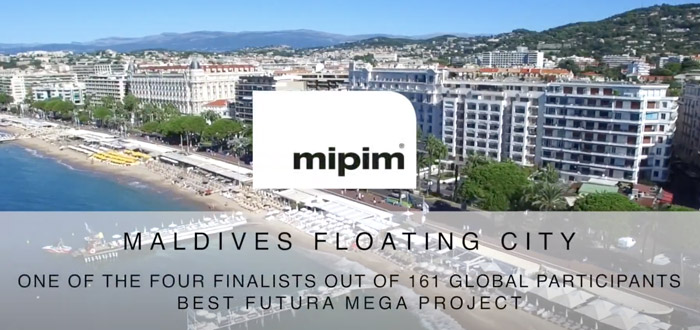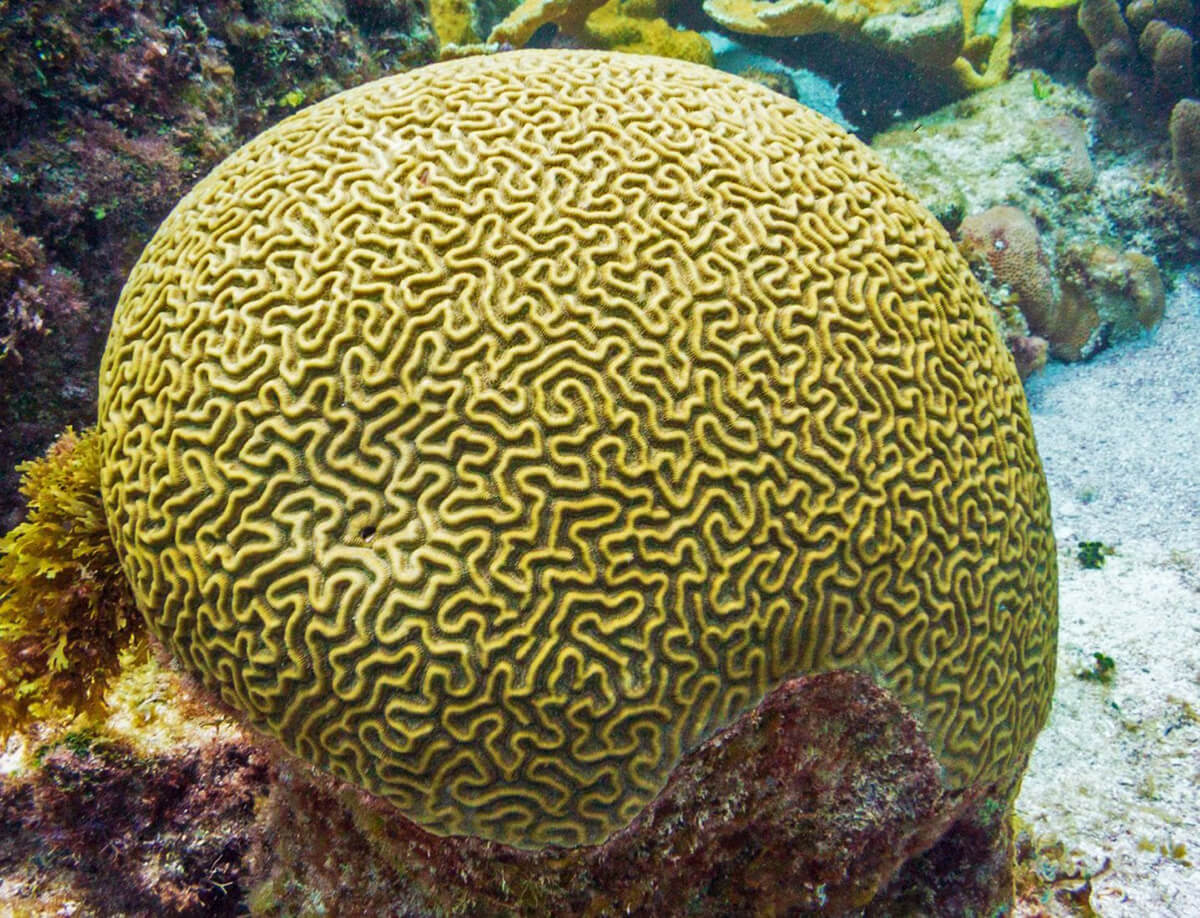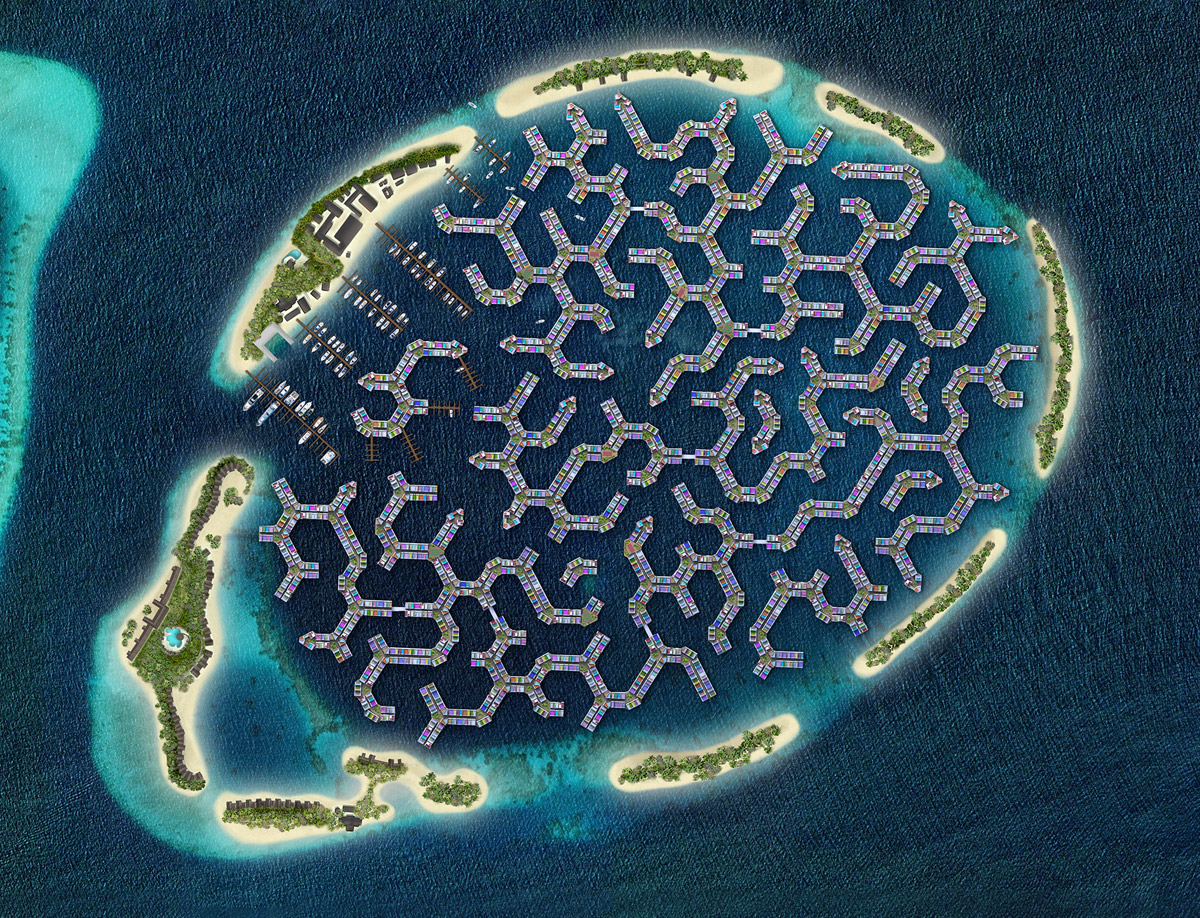
Floating
City.

Maldives Floating City – Finalist Mipim Awards. View here
Inspiration
Brain Coral: Concept Inspiration for Maldives Floating City
Maldives Floating City is the first development of a new era in which Maldivians return to the water with resilient eco-friendly floating projects. The city has a nature-based structure of roads and water canals resembling the beautiful and efficient way in which real brain coral is organised. The idea of having brain coral as the leading concept is that the goal of living with nature and learning to improve and respect natural coral is at the heart of the development, which leads to new knowledge emphasising the responsibility Maldives takes as centre for coral protection in the world.
Facts
Sales will start soon and expressions of interest can already be made on this website.
Maldives Floating City, a benchmark for vibrant communities beyond the waterfront.
10 Requirements
A floating city must be part of a legal framework of a city or country. This gives the inhabitants a legal status. The floating homes and other structures must be labelled as real-estate, like in Maldives, in order to make finance and insurance possible.
A city consisting of thousands of units can only be build when infrastructure and units are built from a modular system in order to ensure quality, standardization, certification, short construction time, cost control and efficient maintenance.
A floating city needs gateways for inhabitants and visitors to reach the city easily. Modern cities have hundreds of entrance points, a cruise ship has only a few. A floating city with canals provides multiple access points.
Power and utilities are the backbone of a floating city. The reduction of energy consumption and production of green/blue energy in a smart grid where each unit shares and uses the surplus of available energy is an essential element for a viable floating city.
The healthy viable metabolism of a floating city is depending on the supply and distribution of goods, storage and controlled waste treatment and disposal. Supply and waste management must be integrated in the urban planning. A healthy floating city starts with the metabolism structure.
Shadows caused by space covered with floating structures must be in balance with the amount of sunlight that can reach the seabed. Large floating structures must provide enough open space. The floating structures must enhance underwater life, instead of causing any negative effects.
Forces of nature, waves, extreme weather, and sea-level rise for a 100-year prediction must be engineered in advance. Rigidity versus flexibility and a mooring system that can divert all the extreme forces are the base of a floating city design. Single structure city foundations act as huge mega ships, which have to handle enormous forces. By dividing the city in elements these forces can be handled in a more effective way with minimal risks.
A floating city needs law and order as well as a defence system. Once the floating city is part of an existing law and order framework, this will enable inhabitants to live in a safe and protected environment.
A floating city must be a dynamic city, which means its structure must have ability to be adjusted, appended and updated as building for change is the only way to response to unknown challenges of the future. A city with a growth model existing of smaller structures will provide this flexibility.
A floating city is more than just the sum of the built structures. Community-based developments are based on culture and common liveability goals, and will be the backbone of a healthy and feasible city.
Residence Permit
Foreign buyers of a house in Maldives Floating City can apply for a Residence Permit in Maldives. More information will follow soon.

